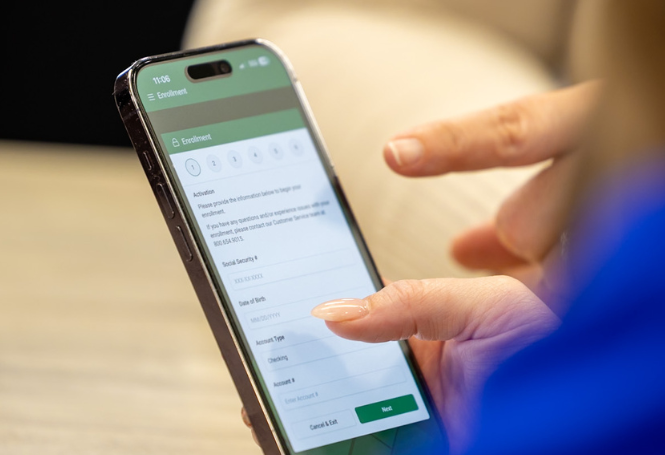.png)
Know What to Watch For
You don’t need to be a tech expert to protect yourself from fraud. Just a little knowledge goes a long way. We’ve simplified the most common scam threats and included practical tips to help you avoid them.
Simple Ways to Protect Yourself from Scams
Spot the Red Flags
Scammers create urgency to get you to act fast. Don’t click suspicious links or respond to unexpected messages. Take a breath, verify the source, and stay in control.
Protect Your Information
Know Who You’re Talking To
If something feels off, don’t respond. Look up the company’s official contact information and reach out directly to confirm the request.
What is Identity Theft?
How to Recognize it:
- Charges you don’t recognize
- Credit report changes you didn’t request
- Missing bills or account statements
How to Prevent it:
- Check your bank accounts and credit regularly
- Create strong, unique passwords
- Keep antivirus software updated
- Avoid clicking on suspicious links or attachments
How to Report it:
- Federal Trade Commission: Visit IdentityTheft.gov or call 1.877.438.4338
- Local Police: File a report if needed by creditors or if you know the person involved
- Medical or Tax Fraud: Report to Medicare or the IRS
- Credit Bureaus: Contact Equifax, Experian, or TransUnion to place a credit freeze or fraud alert
Security Threats to Watch For
Cybercriminals are always finding new ways to trick people into sharing personal or financial info. Here are a few common tactics to look out for—and how to protect yourself.
Phishing, Spoofing & Quishing
Scammers may pretend to be a company or person you trust, using slightly altered emails, websites, or QR codes to trick you.
- Double-check email addresses and links before clicking.
- Never share personal info through links in unexpected messages.
- Be cautious when scanning QR codes—check the URL before continuing.
Social Media Safety
Oversharing online can make you a target.
- Avoid posting personal details like your address or travel plans.
- Review privacy settings on your accounts.
- Be cautious with friend requests and third-party apps.
Caller ID Spoofing
Just because a number looks familiar doesn’t mean it’s legit.
- Let unknown calls go to voicemail.
- Don’t share personal information over the phone unless you initiated the call.
- Verify any requests by calling the organization directly using a number from their official website.
What is Multi-Factor Authentication (MFA)?
MFA adds an extra layer of protection to your online accounts. Instead of just a password, you’ll need a second form of verification—making it harder for scammers to get in.
MFA uses two or more of the following:
- Something you know (like a password)
- Something you have (like a code sent to your phone)
- Something you are (like a fingerprint or face scan)
Why it matters: Even strong passwords can be stolen. MFA makes it much more difficult for someone else to access your accounts, even if they have your login information.

